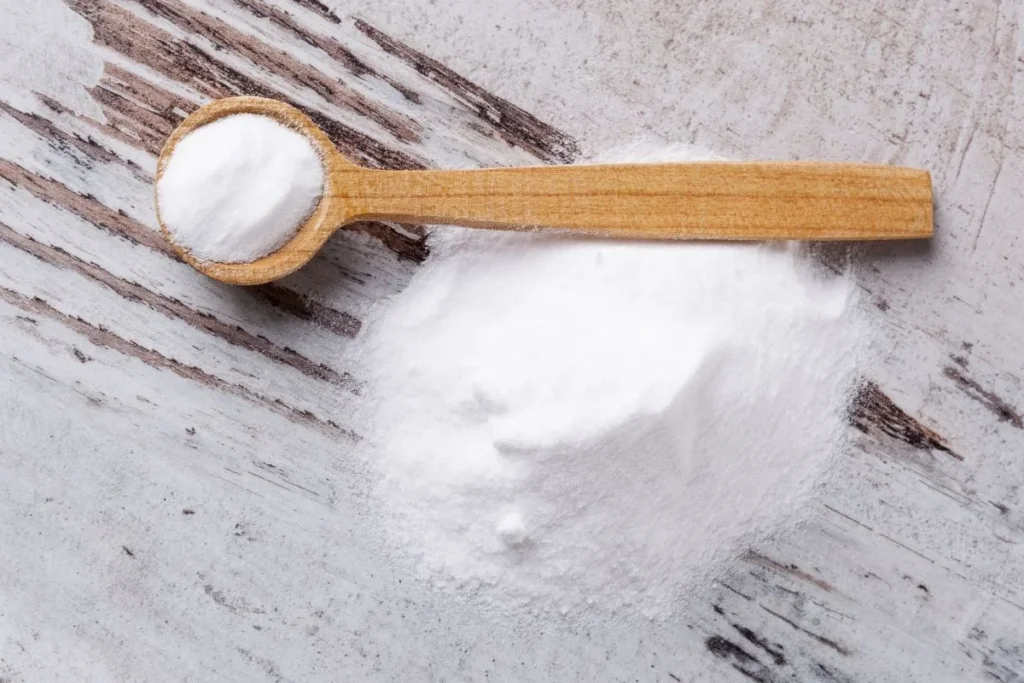
Why Is My Sourdough Starter Runny and How to Fix It
Are you annoyed with your watery sourdough starter and tired of making disappointing homemade bread? No worries, we’ve got you covered! In this guide, we’ll help you tackle the issues with your runny sourdough starter so that you can finally nail that perfect homemade bread you’ve always wanted.
Whether you’re just starting or you’re a seasoned home baker, dealing with a runny sourdough starter can be irritating. It might lead to flat, dense loaves or, even worse, bread that refuses to rise.
But don’t fret! In this blog, we’ll dig into the reasons behind a runny sourdough starter and offer practical solutions to get your starter back on the right track.
Table of Contents
Toggle5 Reasons Why Your Sourdough Starter is Runny
Discovering a watery sourdough starter can be discouraging for any baker. Let’s delve into the five common reasons why your sourdough starter might be runny.
Incorrect Flour-Water Ratio
One main reason for a runny sourdough starter is an improper balance of flour and water. The right ratio is crucial for a strong and stable starter. If it’s too runny, it might mean you added too much water or too little flour during feeding.
To fix this, adjust your feeding routine, gradually increasing or decreasing the water until you get the consistency you want.
Inadequate Feeding Schedule
Sourdough starters are living cultures that need regular feeding to stay active and healthy. Neglecting it for too long or not sticking to a consistent feeding schedule can make it runny.
To solve this, establish a feeding routine that fits your life, making sure to refresh the starter regularly. Consistent feeding will lead to a more stable and lively sourdough starter.
High Ambient Temperatures
Temperature is crucial for sourdough fermentation. If it’s too hot, the microbial activity can speed up, causing the starter to become runny. In warm weather or hot kitchens, adjust the feeding frequency or move the starter to a cooler spot.
Keeping an eye on the temperature and making necessary adjustments will help keep your sourdough starter’s consistency.
Use of Chlorinated Water
Chlorinated water can hinder the growth of yeast and bacteria, resulting in a weak, runny mixture. Tap water often has chlorine, which affects the microbial balance. To fix this, use filtered or dechlorinated water when feeding your starter.
Letting the water sit out for a few hours before using it can also help remove the chlorine, contributing to a healthier and more consistent sourdough starter.
Infrequent Stirring or Mixing
Sourdough starters benefit from regular stirring or mixing to evenly distribute yeast and bacteria. If your starter is becoming runny, it might be due to not stirring enough. Proper mixing ensures that microbial components are well-distributed, promoting a uniform consistency.
Make sure to stir thoroughly during each feeding, reaching the bottom of the container. This practice will contribute to a more balanced and robust sourdough starter.
Signs of a Runny Sourdough Starter
A runny sourdough starter can be a bit worrisome, suggesting potential fermentation or ingredient balance issues. It’s crucial to spot these signs to keep your starter healthy and make top-notch sourdough bread.
- If your sourdough starter seems thin and watery instead of its usual thick and stretchy texture, that’s a red flag. It likely means there’s an imbalance between the flour and water in the mix. Ideally, a well-kept sourdough starter should be a bit thick and gooey to trap the carbon dioxide produced during fermentation, helping the bread rise.
- Another thing to watch for is a layer of liquid on the top of the starter, often called “hooch.” While a small amount is normal, an excess might mean your starter is too wet or isn’t getting the right feeding schedule. To fix this, regularly get rid of some starter and refresh it with the proper mix of flour and water.
- Lastly, if your sourdough starter starts giving off funky smells, there might be a problem. A healthy starter should have a nice, tangy aroma. If it smells off or is unpleasant, it could be over-fermented, contaminated, or hosting unwanted bacteria. Keep an eye (or nose) on it!

How to Fix Runny Sourdough Starter in 4 Easy Ways
Fixing a runny sourdough starter is a straightforward process that involves a few simple adjustments. In this guide, we will explore four easy ways to troubleshoot and remedy a runny sourdough starter.
1. Adjusting Hydration Levels
The consistency of your sourdough starter is largely influenced by its hydration level – the ratio of water to flour. If your starter is too runny, it may contain too much water. To address this, you can thicken your starter by gradually adding more flour.
Begin by adding small amounts of flour (about a tablespoon) to the starter and mixing thoroughly. Continue this process until the desired consistency is achieved.
Be patient, as it may take a few feedings to reach the right balance. Monitoring the texture and adjusting the hydration levels accordingly will help you regain control over your runny sourdough starter.
2. Optimal Feeding Schedule
Consistency in feeding is crucial for maintaining a healthy and well-balanced sourdough starter. If your starter is runny, it may be an indication that you need to adjust your feeding routine.
Consider feeding your starter more frequently to enhance its structure and stability. Instead of the usual 24-hour feeding cycle, shorten it to 12 hours.
This will provide the beneficial microorganisms in the starter with more regular nourishment, helping to thicken the consistency over time. Remember to maintain a consistent ratio of flour to water during each feeding to achieve the desired thickness.
3. Temperature Management
The environment in which your sourdough starter is kept plays a significant role in its overall health and consistency. If your kitchen is too warm, fermentation may accelerate, leading to a runny starter. Conversely, a cold environment can slow down fermentation, affecting the starter’s texture.
To remedy this, consider adjusting the temperature of the location where your sourdough starter is stored. If your kitchen is warm, move the starter to a cooler spot, or vice versa. Finding the optimal temperature for your starter’s growth will contribute to a more controlled and predictable consistency.
4. Discard and Refresh
Over time, a sourdough starter can accumulate byproducts of fermentation that might contribute to a runny texture. To refresh the starter and eliminate excess liquid, try the discard and refresh method.
Begin by discarding a portion of the starter (usually half) and then replenishing it with fresh flour and water.
This process not only helps regulate the hydration level but also revitalizes the microbial activity within the starter. Perform this discard and refresh routine for a few consecutive feedings until you notice a thicker and more resilient consistency.

Can You Use Runny Sourdough Starter?
Yes, you can use a runny sourdough starter in your bread baking, but there are a few things to consider. A runny sourdough starter typically has a higher hydration level, meaning it contains more water than flour. This can affect the consistency of your dough and the overall outcome of your bread.
Here are some tips when using a runny sourdough starter:
- Adjust hydration in the recipe: Since your starter is more liquid, you may need to adjust the hydration in your bread recipe. You might want to decrease the amount of water in the recipe to compensate for the extra moisture in your starter.
- Modify flour amounts: If your starter is runny, you may need to add more flour to achieve the desired dough consistency. This may require some experimentation to get the right balance.
- Maintain overall hydration balance: Keep in mind the total hydration of your dough, which includes both the water in the recipe and the hydration level of your starter. Balancing hydration is crucial for achieving the desired texture in your bread.
- Allow for longer fermentation: A runny starter may contain more active yeast and bacteria. This can lead to a faster fermentation process. Keep an eye on your dough during fermentation and be prepared to adjust fermentation times accordingly.
- Observe dough consistency: Pay attention to the consistency of your dough throughout the baking process. If it seems too wet or sticky, adjust by adding a bit more flour until you achieve the desired texture.

Maintenance Tips for a Healthy Sourdough Starter
Maintaining a healthy sourdough starter is crucial for achieving consistently delicious and well-risen bread. Here are some key maintenance tips to ensure your sourdough starter remains robust and active.
- Regular Feeding Schedule: Establish a consistent feeding routine for your sourdough starter. Feed it with equal parts of flour and water at regular intervals, ideally every 12 hours. This routine promotes yeast and bacteria activity, keeping your starter vigorous.
- Use Quality Ingredients: Opt for high-quality, unbleached flour and filtered water. Avoid chlorinated tap water, as chlorine can inhibit the growth of beneficial microorganisms in the starter. Using the best ingredients sets the foundation for a healthy fermentation process.
- Maintain Optimal Temperature: Sourdough starters thrive in a warm environment. Keep your starter in a place where the temperature is between 70-75°F (21-24°C). This range supports the growth of wild yeast and lactic acid bacteria, essential for the fermentation process.
- Observation and Adjustments: Pay close attention to the activity of your sourdough starter. Bubbles, a rise in volume, and a pleasant aroma are signs of a healthy starter. If you notice a decline in activity or an off-putting smell, consider adjusting the feeding ratio, frequency, or temperature to meet the needs of your unique starter.
- Maintain Hygiene: Practice good hygiene to prevent contamination. Use clean utensils and containers for feeding your starter, and make sure your hands are washed thoroughly before handling it. A clean environment minimizes the risk of unwanted bacteria affecting the starter.
- Consistent Hydration: Adjust the hydration level of your sourdough starter based on your baking preferences. A wetter starter produces a more open crumb, while a stiffer one contributes to a denser texture. Experiment with hydration levels to find the consistency that suits your taste.
Frequently Asked Questions (FAQS)
Why is my sourdough starter watery on top
If your sourdough starter appears watery on top, it may be due to excess liquid or insufficient feeding. Stir it well, discard some, and feed it with equal parts flour and water. Maintain a consistent feeding schedule to achieve a thicker, healthier consistency.
What consistency should my sourdough starter be?
A well-maintained sourdough starter should have a thick, pancake batter-like consistency. Adjust your feeding routine by adding more flour or water as needed to achieve this texture. Consistency is key to a vigorous and active starter for baking.
Is sourdough starter supposed to be liquidy?
While some liquid separation is normal, a fully liquidy sourdough starter may indicate neglect or imbalanced feeding. Stir it thoroughly, discard excess liquid, and feed it regularly with equal parts flour and water to restore the desired thick consistency.
How do I know if I killed my sourdough starter?
Signs of a dead sourdough starter include a lack of bubbles, a foul odor, or discoloration. If unsure, conduct a “float test” by dropping a spoonful of starter into the water – it should float. Revive a struggling starter by discarding and feeding it regularly until it shows signs of activity.
Why Is My Sourdough Starter Runny | Conclusion
Maintaining a healthy sourdough starter is a rewarding journey that requires attention, care, and a bit of troubleshooting along the way. If you find yourself with a runny sourdough starter, don’t be discouraged. By identifying the underlying causes and implementing the appropriate solutions, you can revive your starter and continue creating delicious, homemade sourdough bread.
Remember, each sourdough starter is unique, and adjustments may need to be tailored to suit the specific conditions of your kitchen and baking routine. With patience and a keen eye for detail, you’ll soon have a robust and vibrant sourdough starter ready to elevate your bread-making adventures. Happy baking!
Lindsey Mackenzie
About me
Hi there! I’m Lindsey Mackenzie, the founder of Bake Smartly. Baking has been my passion since childhood, growing up in my father’s bakery. With Bake Smartly, I’m excited to share my love for all things sweet and savory. Join me on this delicious journey as we whip up scrumptious treats and sprinkle joy into every bite!






